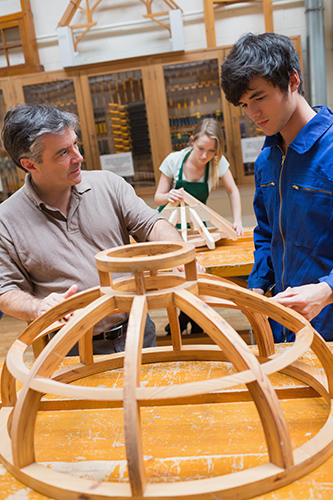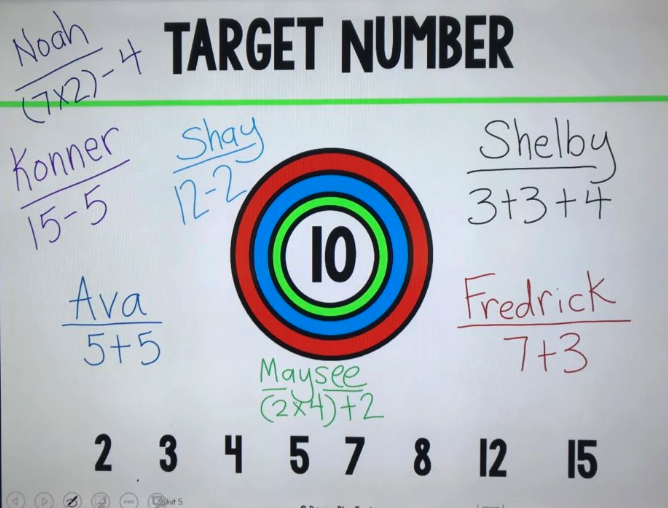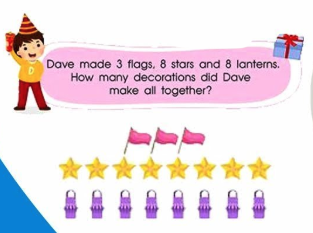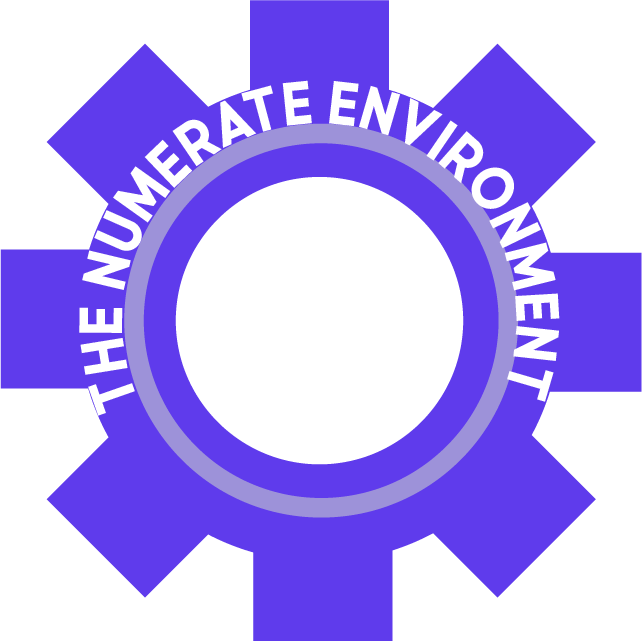
Numerate Environment
Discussions and Questions Deepen Mathematical Understanding
What does this mean?
Did you know that question-asking and classroom discussion is linked to higher levels of achievement? As students move through school however, they ask fewer and fewer questions, for fear of looking like they don’t know. (Boaler, J. 2017). “Discussion (and questions) are strategies that supports teachers in understanding what students already know and in determining what they still need to learn. In this sense, listening to students’ ideas in discussions can serve as formative assessment that helps teachers make decisions about instruction.”
(NCTM, 2013)
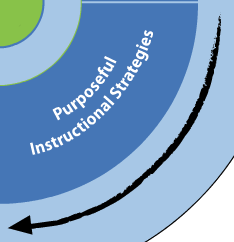
Framework for Deep Questions
Retrieved from: https://www.weareteachers.com/8-ways-to-pose-better-questions-in-math-class/
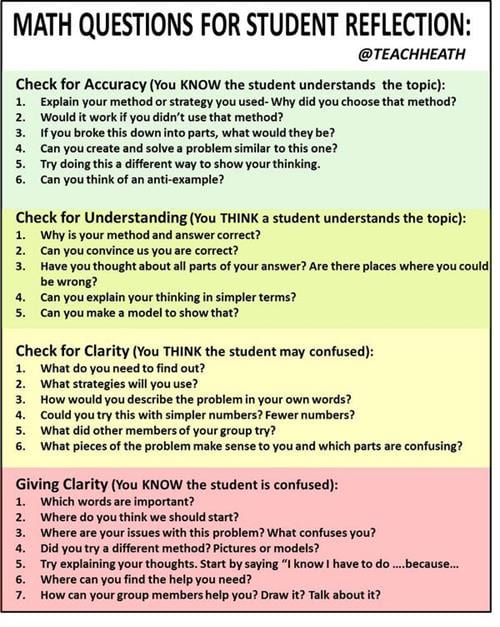
How do I Support This?
CONSIDER
“Participation in classroom discussion is not optional. “Whether working in small groups or discussing a problem with the whole class, each student is expected to contribute his or her fair share” (Reinhart, 2008). The use of Think-Pair-Share is a key strategy to facilitate this:
- All students think and work independently first
- Then pair with a partner or small group
- Do not call on volunteers for answers after pair or small group work. Limit the use of group responses. Any student can be called upon to share a key point the group discussed, an important discovery the group made, a summary of what another group member shared
- Giving students adequate time to process the questions you ask before being asked to respond. Don’t forget ‘wait-time.” Count to 5 before asking a student to respond or use a strategy such as Think-Pair-Share before asking for an answer (Government of Ontario, 2011).
- When good questions are asked, write them on the board or on poster paper so they can be used as examples of quality questions (Reinhart, 2008).
- “If students or groups cannot answer a question or contribute to the discussion…they must ask a question of the class”. It is okay to not understand or be confused but they need to ask questions that might help them understand. (Reinhart, 2008, p. 93)

- Posing open questions that encourage a variety of approaches and responses such as, “is there another way to…”, “what do you notice about?”
(Government of Ontario, 2011). - Requiring the use of proper mathematical vocabulary and expecting it from students.
- Asking students to make the math visible. Have students discuss the connections and relationships between math concepts (e.g. how does that array relate to multiplication and division?” In what ways might the normal distribution apply to this situation?” (Hudson, 2016)
- For additional questions, see pp. 4-5 in the Government of Ontario, 2011 resource.
Teacher Professional Learning Resources:
Resources to use with your Class and Students:
Children’s Literature
Which one Doesn’t Belong (Book & Teacher’s Guide)
How Many? (Book & Teacher’s Guide)
Anno’s Mysterious Multiplying Jar by Masaichiro and Mitsumasa Anno
Bibliography and Further Reading
Boaler, J. (2017). Positive Norms Description Paper. Retrieved September 28, 2019, from https://www.youcubed.org/downloadable/2017-positive-norms-description-paper/
Government of Ontario. (2011). Asking Effective Questions Provoking student thinking/deepening conceptual understanding in the mathematics classroom. Retrieved September 28, 2019, from http://www.edu.gov.on.ca/eng/literacynumeracy/inspire/research/cbs_askingeffectivequestions.pdf
Hudson, H. (2017, August 1). 8 Ways to Pose Better Questions in Math Class. Retrieved September 28, 2019, from https://www.weareteachers.com/8-ways-to-pose-better-questions-in-math-class/
The National Council of Teachers of Mathematics. (2013). Benefits of Discussion. Retrieved October 27, 2019, from https://www.nctm.org/Research-and-Advocacy/Research-Brief-and-Clips/Benefits-of-Discussion/
Reinhart, S. C. (2008). Never say anything a kid can say! In Growing Professionally Reading from NCT< Publications for grades K-8 (pp. 89–94). Reston, VA: National Council of Teachers of Mathematics.
